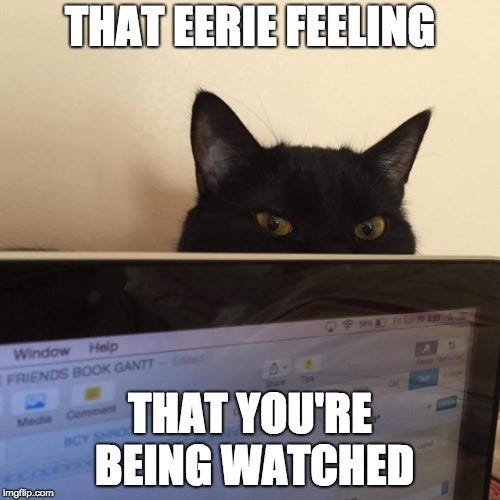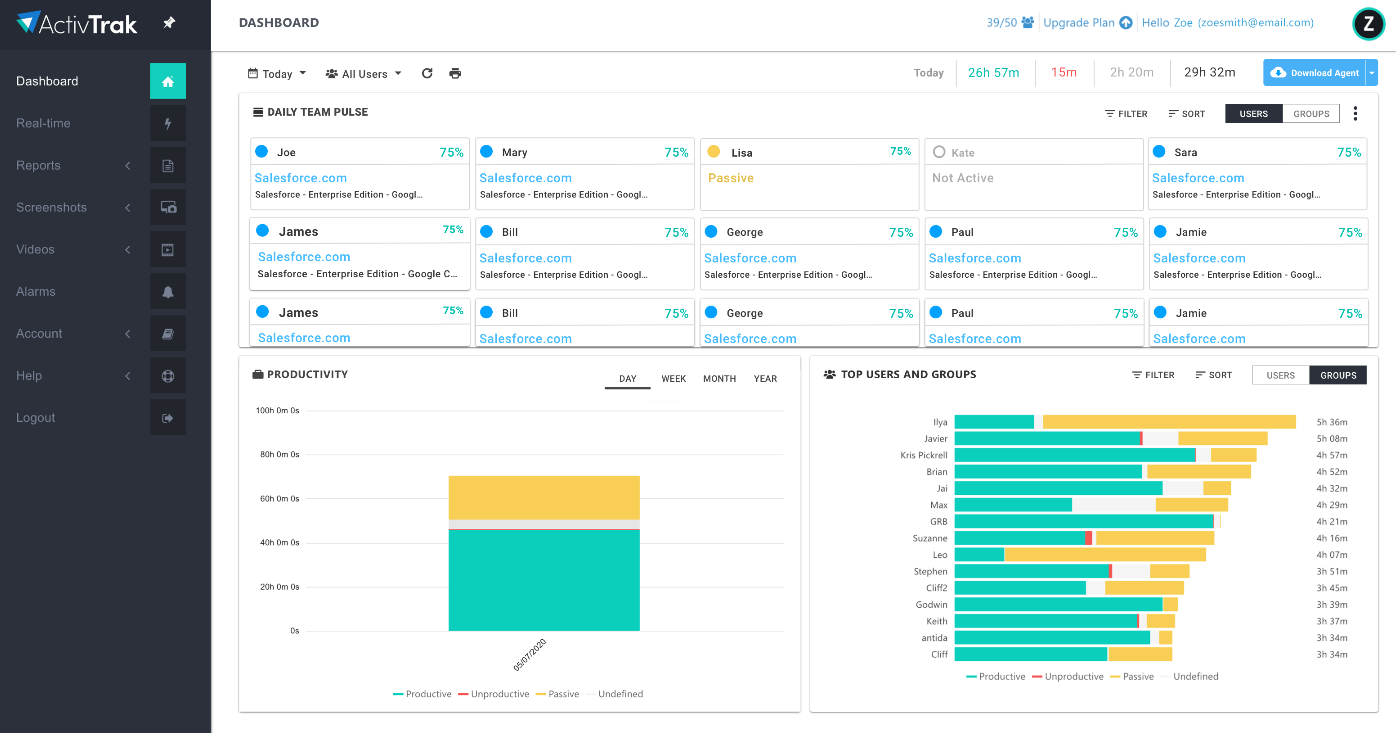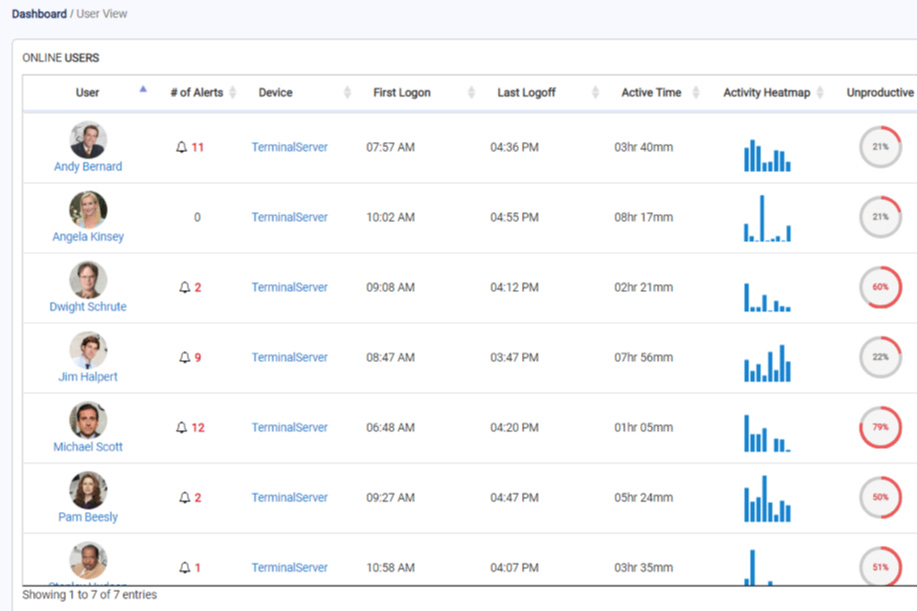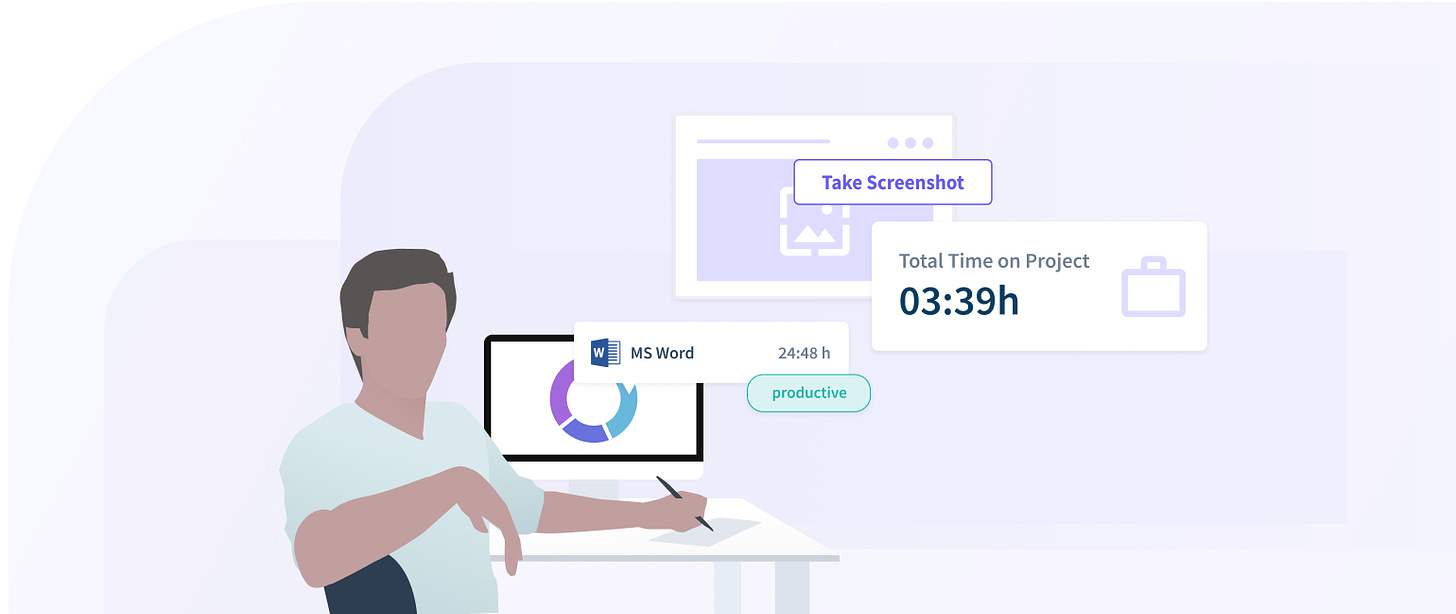Ethical musings on "Bossware" and it's implications on the future of remote work
The new age alternative to your boss looking over your shoulder
What is “bossware”?
Back in 2019, a Gartner survey of 239 corporations found that more than half were already using “nontraditional monitoring techniques” for their employees.
Remember 2019?? Yeah, it’s a lifetime ago. Hard to imagine another industry that benefited more from the pandemic than “bossware”. “Bossware”, also known as employee monitoring or productivity software, has gone from being incredibly creeping and invasive to being a number one need at companies throughout the US. Well, it’s still creepy.
The demand for employee monitoring is very clear from the sales numbers over the past year. Technologies, which owns InterGuard, one of the leading bossware platforms, claims to have grown its customer base by over 300% within the first few weeks after the outbreak. Similarly, trials of Hubstaff software, which cost $7 to $20 a month per user, have tripled since March.
Who is dominating?
Let’s look at the key players. From our research on Crunchbase, there are actually very few companies in the landscape that have raised major venture capital. There are a few small (less than ten people) international companies- Desktime (based in Latvia) and KickIdler (based in Singapore) which have not according to Crunchbase) raised. There are a few who have not listed raising any capital based in the US- Veriato, Hubstaff and Vericlock. The biggest player who has not claimed venture capital publicly is Interguard. Hard to tell whether they just have really great SEO and PR having been around the block a while or if they actually have notable customer traction making them leaders in the space. The only companies that have raised capital are: ActivTrak (Based in Austin, around 100 people and recently raised $70m in a Series B), Teramind (Based in NY, launched in 2014 and raised $6m to date) and Workpuls (Launched in 2016 in SF with a small seed). ActivTrak seems to be the market winner at this point.
What should happen?
As mentioned above, ActivTrak seemed to have made the largest market impact not only based on the clients serviced or the funding raised but I think actually due to their partner integrations. Specifically with Okta. For those who don’t now, Okta, a competitor of Zscalar, is a leading cybersecurity company currently publicly traded with a $34B market cap. I’m just going to throw this out there. Okta should buy ActivTrak. I said it.
How much of the market is already in?
Though they probably don’t want you to know it, some of the biggest companies in the world use bossware. For example, Hubstaff customers include Instacart, Groupon, and Ring. Another example, Time Doctor claims 83,000 users; some of its main customers include Allstate, Ericsson, Verizon, and Re/Max. Our breadwinner, ActivTrak, is used by more than 6,500 organizations, including Arizona State University, Emory University, and the cities of Denver and Malibu. This is just a taste. As you can imagine, most companies really do not want to be publicly outed for using employee monitoring software in the PC 2021 world.
With that said, how much of the market is left untapped?
Let’s get into the numbers. Most monitoring companies offer a few different tiered packages just like any other SaaS company. After these tiers, companies are then priced based on users. Examples being Interguard and ActivTrak are both $9/user per month whereas Workpuls is $6/user per month. Where does that leave the average deal size? The average Fortune 500 company employs around 60k workers. Let’s say only 50% of those workers are in front of a computer day in and day out (the rest are in warehousing, logistics, etc). Per ActikTrak, that’s a $270k/month or $3.2m/year contract. The top 10 Fortune 500 companies (Walmart, Amazon, CVS, etc) have an employee count combined of 4,555,700. Thats $41m in monthly revenue, $492m in annual revenue.
How is this even legally possible?
Under current U.S. law, employers have A LOT of leeway to install surveillance software on devices they own. Different states have different rules about what employers can and can’t do. But workers often have limited legal recourse against monitoring software.
With that said, there is a pretty big chance that will change making this industry a risky one to get into. As state and national legislatures continue to adopt consumer data privacy laws, it’s likely they will also establish protections for workers with respect to their employers. Some touchy areas:
Many of these tools allow employers to collect personal data like private messages and passwords. This should probably be prevented.
Workers should have the right to know what exactly their managers are collecting.
Workers do need a private right of action, so they can sue employers that violate these statutory privacy protections.
What about the ethics?
So at first you are probably thinking, is this the kind of thing I want to support? At least I am. As someone who is very much a conscious capitalist, I do want to ensure I am promoting companies that are going to impact the collective good of society. And there are parts of this industry that do seem incredibly sketch.
For example, At least two services—StaffCop Enterprise and CleverControl—let employers secretly activate webcams and microphones on worker devices. Also, Teramind, Time Doctor, StaffCop, and others make bossware that’s designed to be as difficult to detect and remove as possible. Yikes!
My guideline would be this- transparency is key. The decision to use monitoring software must be actively, communicated within the company and it must be actually rolled out in a collaborative way. HR should schedule training programs and demos in conjunction with the account managers at the software company so that employees understand what the software is, how it’s being used and it can feel like a mutually beneficial tool. People are afraid of what they do not know. People want to be empowered to understand how their performance is being judged. People want to do better at their jobs. If used appropriately, these platforms can help facilitate a transparent and efficient work environment.
For example, administrators can sort applications into productive and unproductive app groups to break down productiveness across different teams, departments, or individual employees. Productivity scoring algorithms make it possible to measure individuals against their past performance as well as against their peers. This way I can tell if 2 PM every day is an unproductive time for me. Instead of trying to power through with minimal results, I can instead take a lunch break.
With Time Doctor, workers may be given the option to delete particular screenshots from their work session. However, deleting a screenshot will also delete the associated work time, so workers only get credit for the time during which they are monitored. This provides more control to the employee and allows them also to be thoughtful/mindful about their work.
Similarly, the company behind WorkSmart, compares its product to a fitness tracker for computer work. Its interface allows workers to see the system’s conclusions about their own activity presented in an array of graphs and charts.
To get into more ethical alternatives to employee monitoring, there are lots of platforms out there that facilitate more productive work environments in a remote world without the big brother vibes for example, Sneek.
What’s interesting?
What I think is so fascinating is that it is really hard to gather data on humans in their day to day activities for psychological studies. I love the idea of monitoring as a means for understanding human productivity, work optimization and habits/patterns. The legal leniency of these platforms right now provides the greatest platform for in field experimentation ever. Sorry, friends, but we are in fact guinea pigs!






